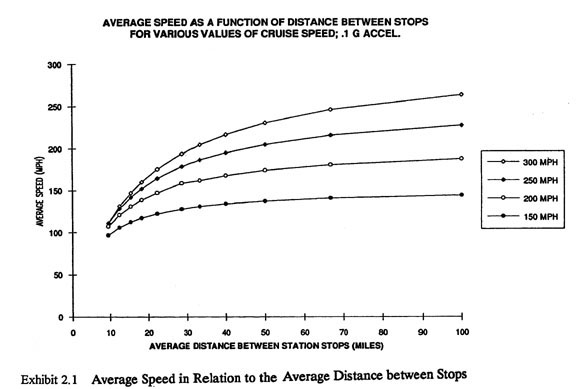
How Station Spacing Affects Average Speed on High Speed Rail Lines
The following chart was published in Future Urban Transportation Systems, published in 1968, by the Stanford Research Institute. It shows how average speeds are affected by the average distance between stations on a rail line. FTL stands for "Fast Transit Link". Effective speed is equivalent to average speed. For example, the chart shows that a high speed rail line that has a crusing speed of 300 mph would have an average speed of around 180 mph. This reduction is the result of the time required for acceleration, deceleration and station dwell times. If anyone knows of a more current chart that addresses these questions, please contact J. Schneider.

Last modified: July 29, 2002